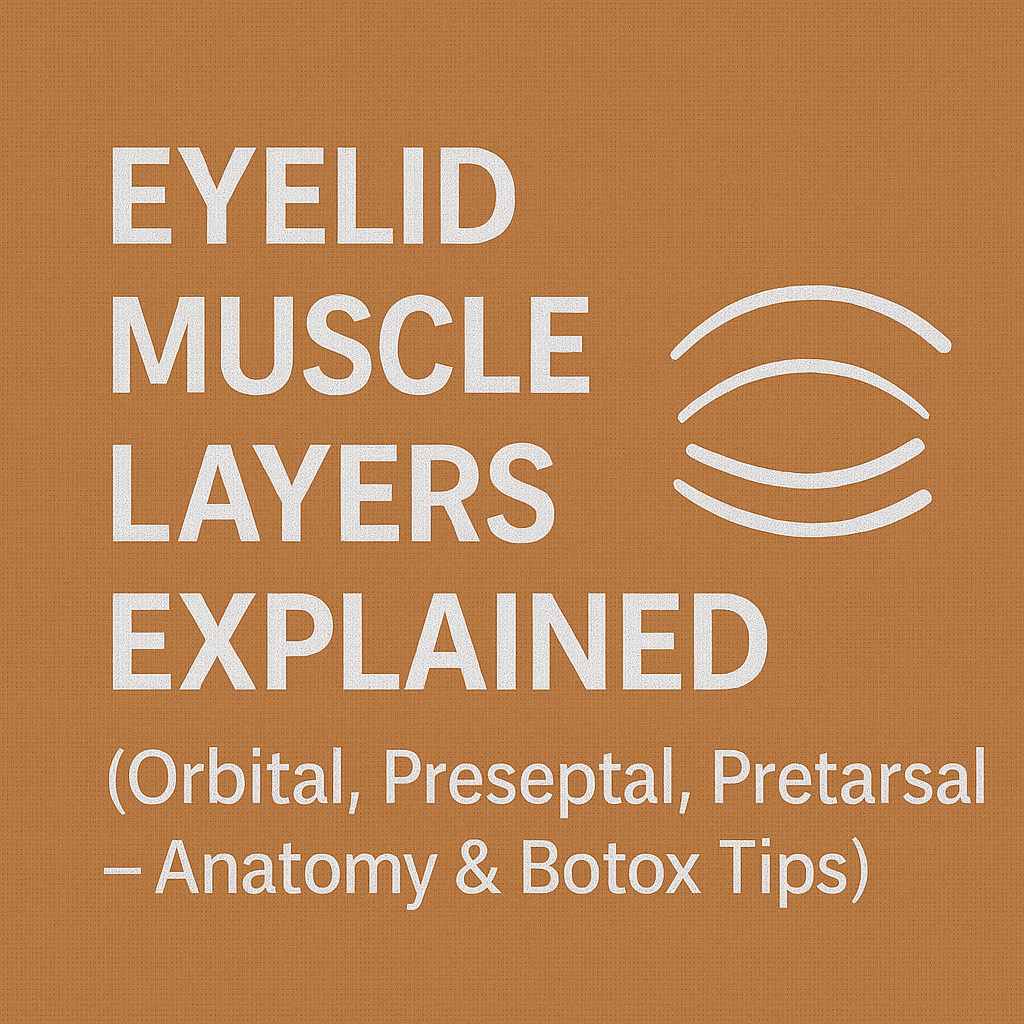Tistoryview
Disease&Treatment/Oculoplastics
Eyelid Anatomy – Orbicularis Oculi & Subcutaneous Fat
eye_doc 2025. 4. 21. 08:58👁 Eyelid Anatomy – Orbicularis Oculi & Subcutaneous Fat
Unlike the rest of the body, the eyelid lacks subcutaneous fat.
Its structure is: Skin – Muscle – Bone/Tissue, instead of the usual layered pattern.
Depending on vertical height, the orbicularis oculi muscle is categorized into:
PositionStructureMuscle Name
| Suprabrow | Skin – Orbicularis – Orbital bone | Orbital part |
| Mid-eyelid | Skin – Orbicularis – Orbital septum | Preseptal part |
| Eyelid margin | Skin – Orbicularis – Tarsal plate | Pretarsal part |
💡 Muscle Functions
PartFunction
| Pretarsal | Involuntary blinking, controls lash position & Meibomian gland (Riolan muscle) |
| Preseptal | Involuntary blinking, contains ROOF/SOOF fat – used in cosmetic surgery |
| Orbital | Voluntary blinking – forceful eyelid closure |


💉 Wrinkle Muscles & Botox
In addition to orbicularis, Corrugator and Procerus contribute to wrinkles.
Wrinkle TypeMuscleTreatment
| Vertical (Glabellar) | Corrugator | Botox |
| Horizontal (Nasal bridge) | Procerus | Botox |
✅ Summary Points
- Eyelids have no subcutaneous fat, unlike other skin areas
- Muscle structure and naming vary by position – Pretarsal, Preseptal, Orbital
- Understanding these layers is key for dry eye, entropion, tear troughs, and Botox treatment planning
